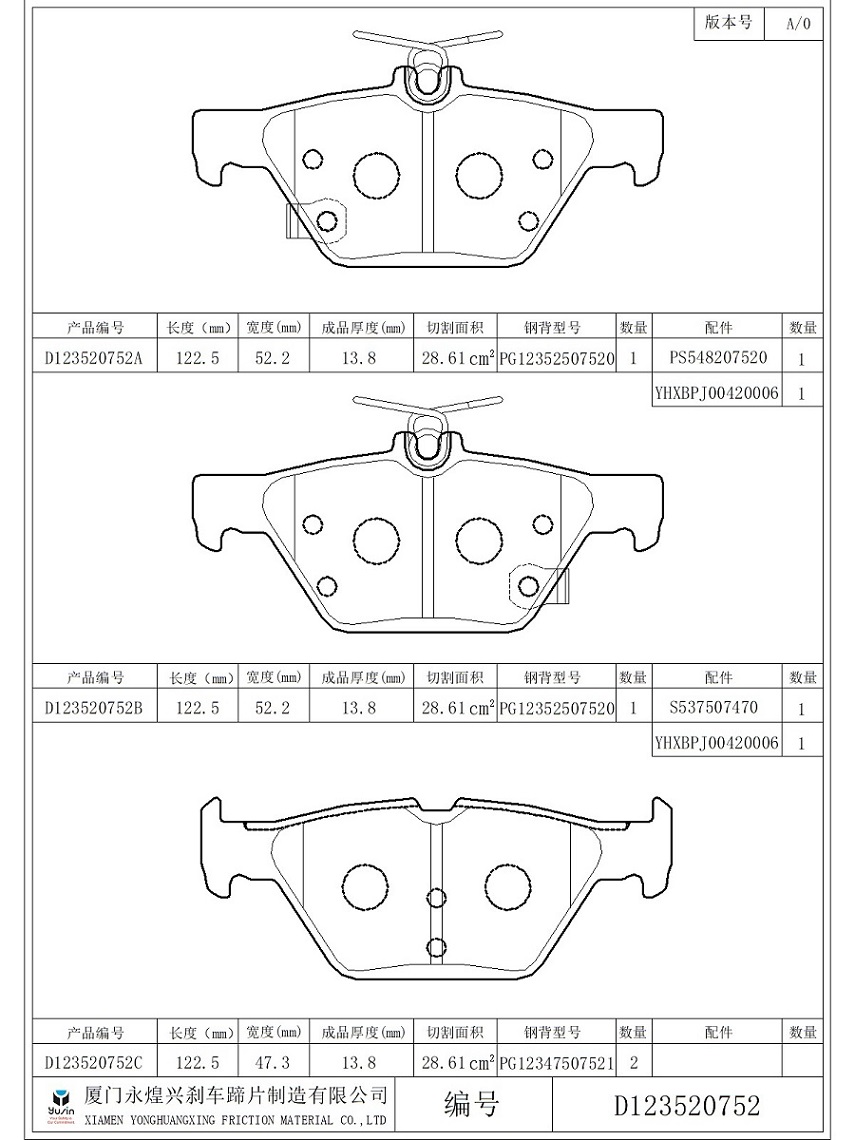Factors Influencing the Lifespan of Brake Pads: Understanding Wear and Tear
2024-02-28
Brake pads are a critical component of the braking system, tasked with the crucial role of slowing down and stopping your vehicle safely. However, the lifespan of brake pads can vary significantly depending on a variety of factors. From driving habits to environmental conditions, several variables can affect how quickly brake pads wear down. In this blog post, we'll explore the key factors that influence the lifespan of brake pads, helping you understand how to maximize their durability and maintain optimal braking performance.
Driving Habits
1. Braking Frequency: The more frequently you brake, the faster your brake pads will wear out. Stop-and-go city driving and heavy braking increase wear and tear on brake pads compared to highway driving with fewer stops.
2. Braking Intensity: Aggressive driving behaviors such as hard braking and sudden stops can accelerate brake pad wear. Smooth, gradual braking helps reduce stress on the brake pads and extends their lifespan.
Vehicle Weight and Load
1. Weight Distribution: Heavier vehicles exert more force on the brake pads during braking, leading to faster wear. Additionally, carrying heavy loads or towing trailers can increase the strain on the braking system and accelerate brake pad deterioration.
2. Brake System Design: Vehicles equipped with larger brake rotors and calipers may distribute braking forces more effectively, resulting in less wear on the brake pads. Conversely, smaller or less robust brake systems may experience accelerated pad wear.
Environmental Conditions
1. Climate: Extreme temperatures and weather conditions can affect brake pad performance and lifespan. High temperatures can cause brake fade and accelerate pad wear, while moisture and road salt can lead to corrosion and deterioration.
2. Road Conditions: Driving on rough or uneven surfaces, gravel roads, or abrasive materials can accelerate brake pad wear. Dust, debris, and road contaminants can also accumulate on brake pads, leading to increased friction and wear.
Brake Pad Material
1. Composition: Different types of brake pad materials have varying levels of durability and wear resistance. Ceramic brake pads typically last longer than organic or semi-metallic pads due to their superior heat resistance and friction characteristics.
2. Quality: The quality of the brake pad material and manufacturing processes can affect its longevity. Higher-quality brake pads may use premium materials and advanced manufacturing techniques, resulting in longer-lasting performance.
Maintenance Practices
1. Inspection Frequency: Regular inspections of brake pads allow for early detection of wear and timely replacement. Neglecting routine maintenance can lead to prolonged use of worn brake pads, increasing the risk of brake failure and damage to other brake components.
2. Brake Fluid Quality: Contaminated or degraded brake fluid can affect brake performance and contribute to premature brake pad wear. Regular flushing and replacement of brake fluid help maintain optimal braking system function and prolong pad life.
Conclusion: Maximizing Brake Pad Longevity
In conclusion, the lifespan of brake pads is influenced by a variety of factors, ranging from driving habits and vehicle weight to environmental conditions and maintenance practices. By understanding these factors and taking proactive measures to minimize wear and tear, drivers can maximize the durability and performance of their brake pads. Practicing smooth, controlled driving, avoiding heavy loads and aggressive braking, and adhering to recommended maintenance schedules are essential steps in preserving brake pad longevity. Remember, prioritizing brake system health is crucial for ensuring safe and reliable vehicle operation—take care of your brake pads, and they'll take care of you when you need them most.



